A New Soft-Switching Solution in Three-Level Neutral-Point-Clamped Voltage Source Inverters
Abstract
1. Introduction
2. Proposed Soft-Switching System in Three-Level Neutral-Point-Clamped Inverter
2.1. Structure and Operation Principles
2.2. Working Stages—Switch S11
2.2.1. Stage t11–t12
2.2.2. Stage t12–t13
2.2.3. Stage t13–t14
2.2.4. Stage t14–t15
2.2.5. Stage t15–t16
2.2.6. Stage t16–t17
2.2.7. Stage t17–t18
2.3. Working Stages—Switch S12
2.3.1. Stage t21–t22
2.3.2. Stage t22–t23
2.3.3. Stage t23–t24
2.3.4. Stage t24–t25
2.3.5. Stage t25–t26
2.3.6. Stage t26–t27
2.4. Switching Algorithm
3. Selection of Inverter Elements
3.1. Selection of Switches
3.2. Reactive Elements
4. Laboratory Research
5. Estimation of Power Losses
5.1. Numerical Analysis
5.2. Power Losses Analysis
6. Conclusions
Author Contributions
Funding
Institutional Review Board Statement
Informed Consent Statement
Conflicts of Interest
References
- Feix, G.; Dieckerhoff, S.; Allmeling, J.; Schonberger, J. Simple methods to calculate IGBT and diode conduction and switching losses. In Proceedings of the 13th European Conference on Power Electronics and Applications, Barcelona, Spain, 8–10 September 2009; pp. 1–8. [Google Scholar]
- Sadigh, A.K.; Dargahi, V.; Corzine, K.A. Investigation of conduction and switching power losses in modified stacked multicell converters. IEEE Trans. Ind. Electron. 2016, 63, 7780–7791. [Google Scholar] [CrossRef]
- Oñederra, O.; Kortabarria, I.; Martínez de Alegría, I.; Andreu, J.; Gárate, J.I. Three-Phase VSI optimal switching loss reduction using variable switching frequency. IEEE Trans. Power Electron. 2017, 32, 6570–6576. [Google Scholar] [CrossRef]
- Chang, J.; Hu, J. Modular design of soft-switching circuits for two-level and three-level inverters. IEEE Trans. Power Electron. 2006, 21, 131–139. [Google Scholar] [CrossRef]
- Ge, Q.; Li, Y.; Kong, L. Investigation of topologies for IGCT three-level inverter. In Proceedings of the 2008 IEEE International Conference on Industrial Technology, Chengdu, China, 21–24 April 2008; pp. 1–5. [Google Scholar]
- He, N.; Chen, Y.; Xu, D.; Ma, K.; Blaabjerg, F. A new zero voltage switching three-level NPC inverter. In Proceedings of the 2015 IEEE Applied Power Electronics Conference and Exposition, Charlotte, NC, USA, 15–19 March 2015; pp. 2309–2316. [Google Scholar]
- Song, B.; Kim, J.; Lai, J.; Seong, K.; Kim, H.; Park, S. A multilevel soft-switching inverter with inductor coupling. IEEE Trans. Ind. Appl. 2001, 37, 628–636. [Google Scholar] [CrossRef]
- Ghodke, D.V.; Chatterjee, K.; Fernandes, B.G. Three-Phase three level, soft switched, phase shifted PWM DC-DC converter for high power applications. IEEE Trans. Power Electron. 2008, 23, 1214–1227. [Google Scholar] [CrossRef]
- Li, J.; Liu, J.; Boroyevich, D.; Mattavelli, P.; Xue, Y. Three-Level active neutral-point-clamped zero-current-transition converter for sustainable energy systems. IEEE Trans. Power Electron. 2011, 26, 3680–3693. [Google Scholar] [CrossRef]
- Sahin, Y.; Ting, N.S.; Akboy, E.; Aksoy, I. A new soft switching three level T-type inverter. In Proceedings of the 10th International Conference on Compatibility, Power Electronics and Power Engineering, Bydgoszcz, Poland, 29 June–1 July 2016; pp. 314–318. [Google Scholar]
- Pal, A.; Basu, K. A unidirectional single-stage three-phase soft-switched isolated DC-AC converter. IEEE Trans. Power Electron. 2019, 34, 1142–1158. [Google Scholar] [CrossRef]
- Pal, A.; Basu, K. A three-phase three-level isolated DC-AC converter with line frequency unfolding. IEEE Trans. Power Electron. 2020, 35, 11758–11769. [Google Scholar] [CrossRef]
- Jang, Y.; Jovanovic, M.M. A new three-level soft-switched converter. IEEE Trans. Power Electron. 2005, 20, 75–81. [Google Scholar] [CrossRef]
- Kollensperger, P.; Lenke, R.; Schroder, S.; De Doncker, R.W. Design of a flexible control platform for soft-switching multi-level inverters. In Proceedings of the IEEE 36th Power Electronics Specialists Conference, Dresden, Germany, 16 June 2005; pp. 915–921. [Google Scholar]
- Gekeler, M.W. Soft switching three level inverter with passive snubber circuit (S3L inverter). In Proceedings of the 14th European Conference on Power Electronics and Applications, Birmingham, UK, 30 August–1 September 2011; pp. 1–10. [Google Scholar]
- Ning, G.; Chen, W.; Shu, L.; Zhao, J.; Cao, W.; Mei, J.; Liu, C.; Qiao, G. A hybrid resonant ZVZCS three-level converter for MVDC-connected OFFshore wind power collection systems. IEEE Trans. Power Electron. 2018, 33, 6633–6645. [Google Scholar] [CrossRef]
- Mazgaj, W.; Rozegnał, B.; Szular, Z. The System of Soft Switching of Transistors in the Three-Phase, Three-Level Voltage Source Inverter. Patent PL 232303 B1, 17 July 2017. [Google Scholar]
- Mazgaj, W.; Szular, Z.; Woszczyna, B. The System of Soft Switching of Thyristors in the Three-Phase, Three-Level Voltage Source Inverter. Patent PL 232304 B1, 17 July 2017. [Google Scholar]
- Mazgaj, W.; Szular, Z.; Woszczyna, B. New soft switching system for three-phase three-level voltage source inverters. In Proceedings of the 20th European Conference on Power Electronics and Applications (EPE’18 ECCE Europe), Riga, Latvia, 17–21 September 2018; pp. 83–92. [Google Scholar]
- Chimento, F.; Mora, N.; Bellini, M.; Stevanovic, I.; Tomarchio, S. A simplified spice based IGBT model for power electronics modules evaluation. In Proceedings of the IECON 2011—37th Annual Conference of the IEEE Industrial Electronics Society, Melbourne, Australia, 7–10 November 2011; pp. 1155–1160. [Google Scholar]
- Cholewa, D.; Mazgaj, W.; Szular, Z. Cooperation between vector controlled cage induction motor and voltage source inverter operating with soft switching system. In Proceedings of the 2018 International Symposium on Electrical Machines (SME), Andrychow, Poland, 10–13 June 2018; pp. 1–5. [Google Scholar]
- Haaf, P.; Harper, J. Understanding Diode Reverse Recovery and Its Effect on Switching Losses. In Proceedings of the Fairchild Power Seminar, Charlotte, NC, USA, 16 September 2008; Fairchild Semiconductor Europe: Aschheim, Germany, 2007; pp. 23–33. [Google Scholar]
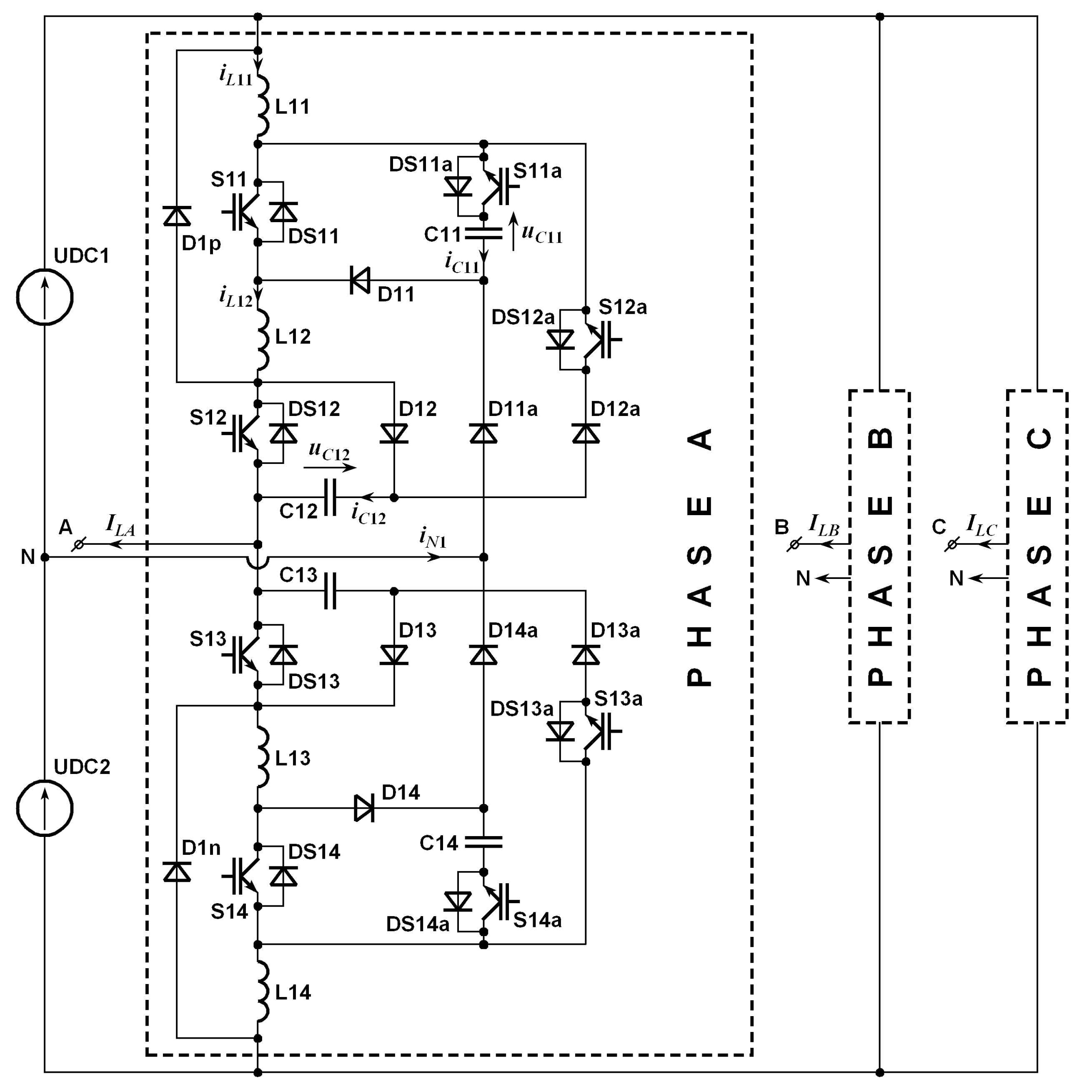
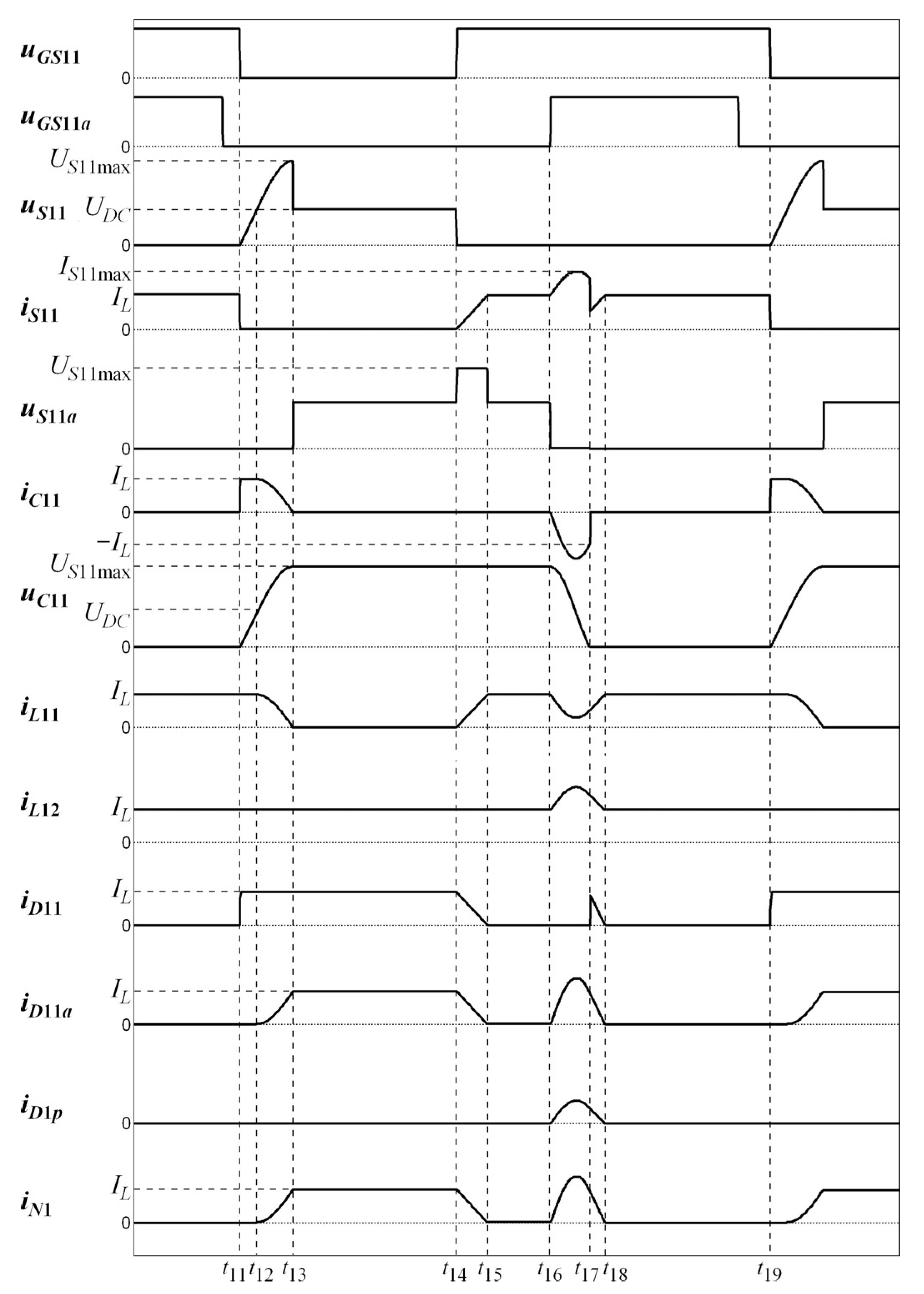
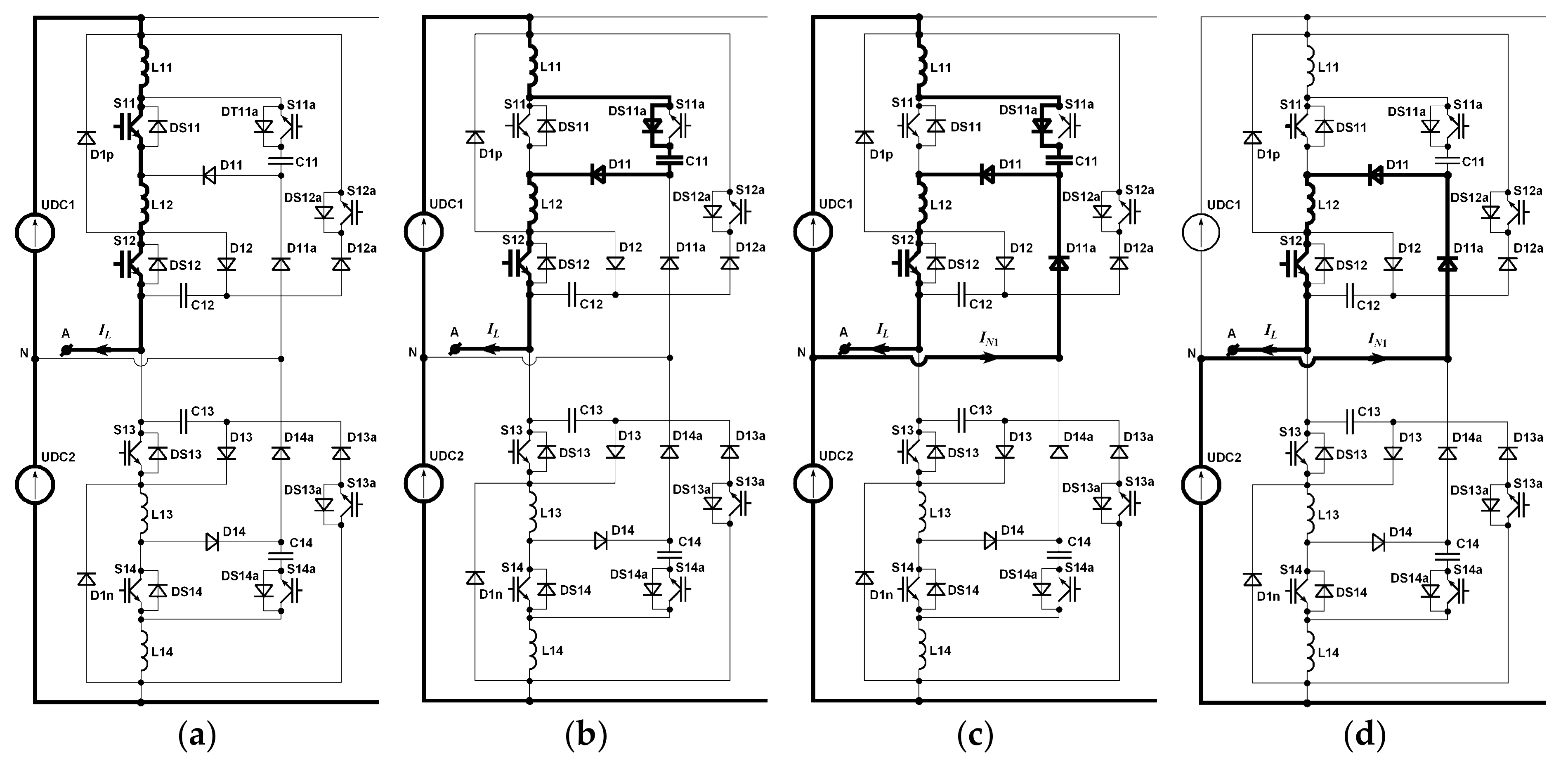
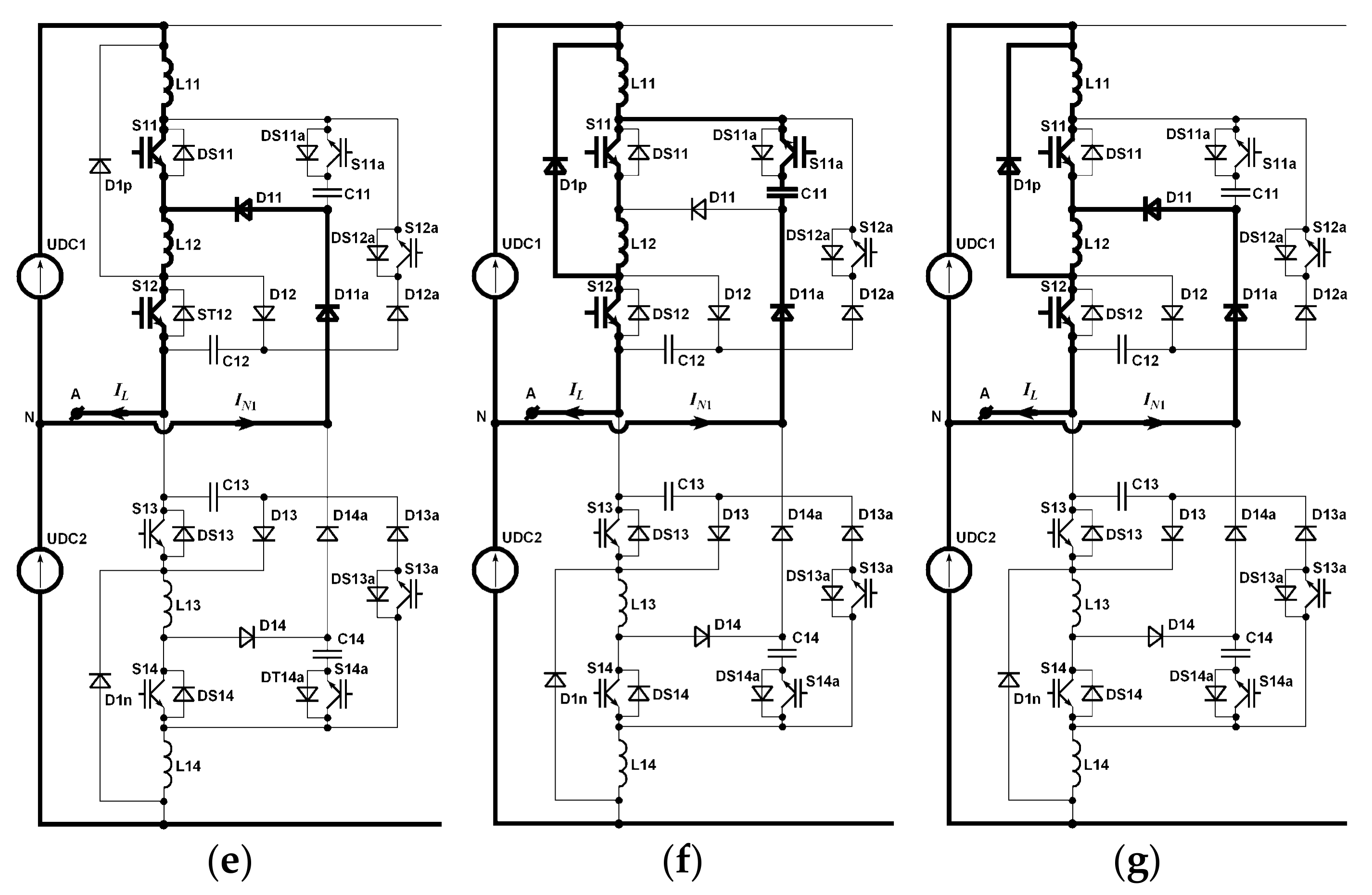
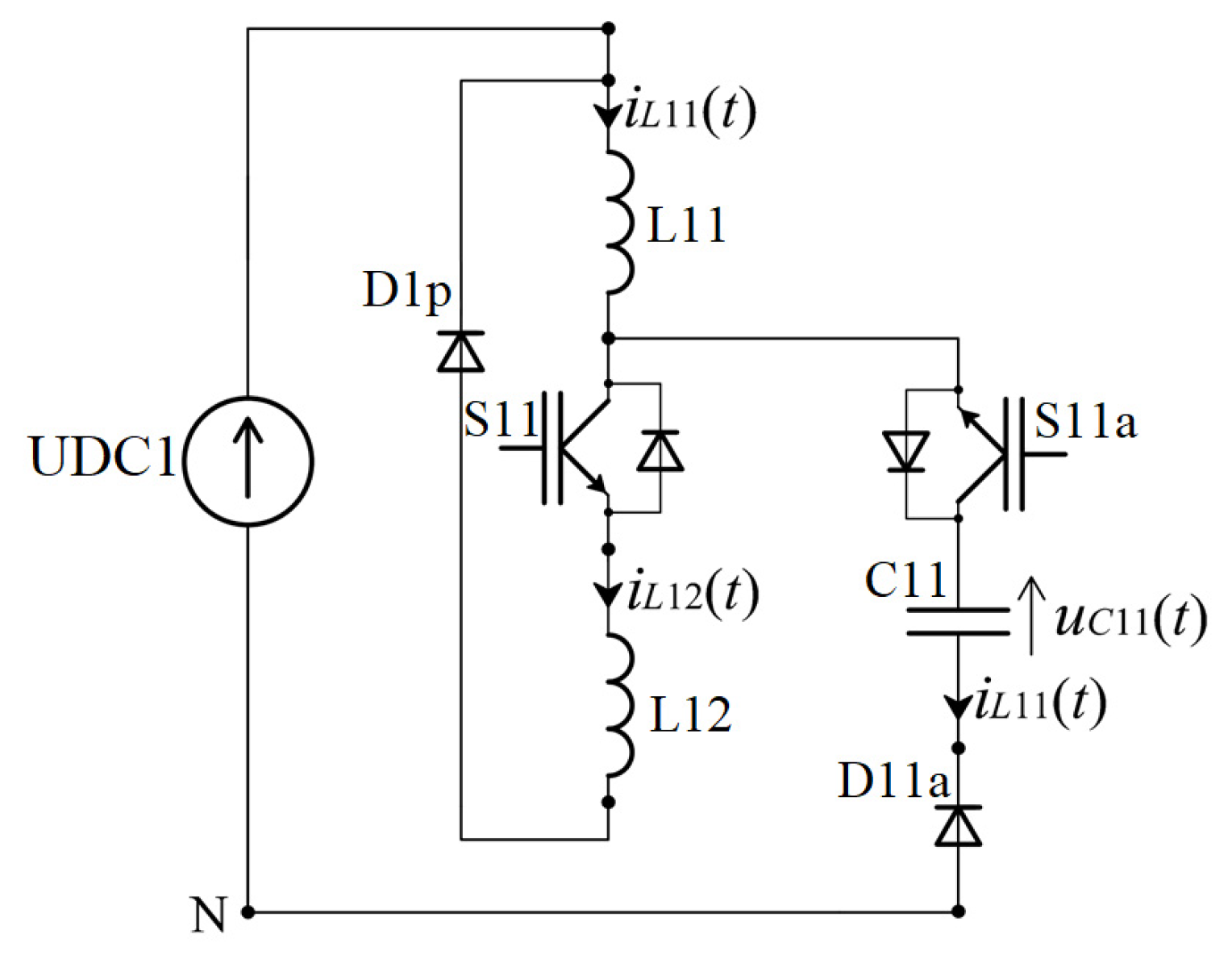

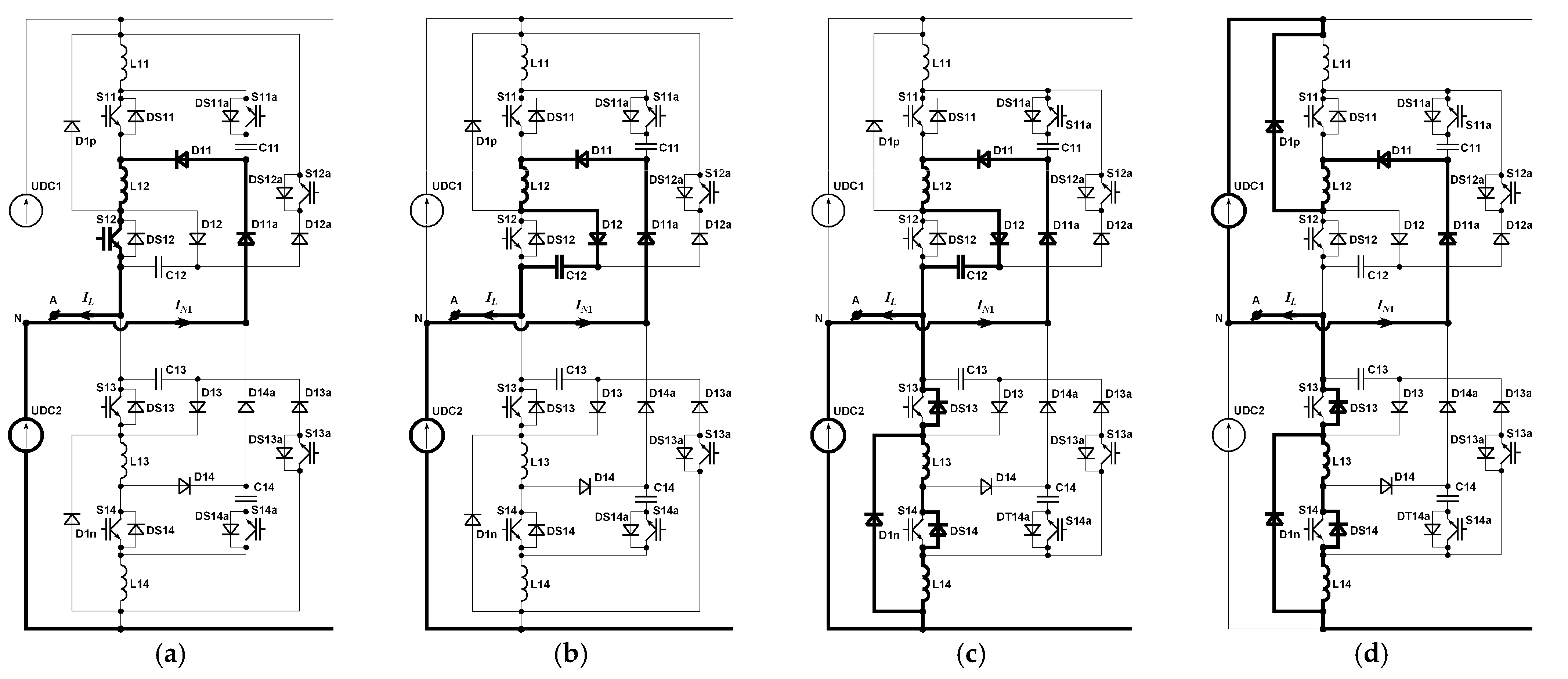
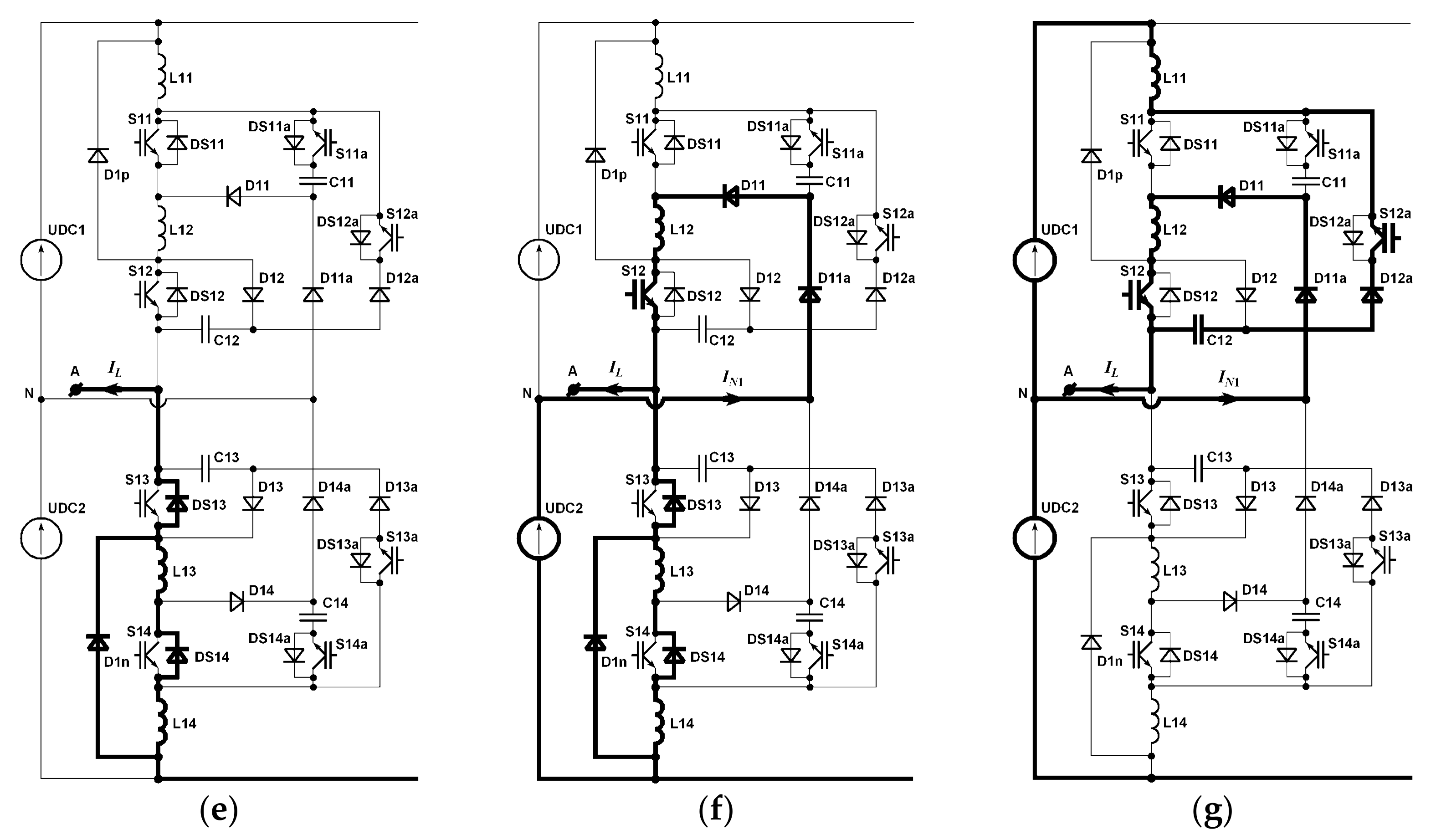
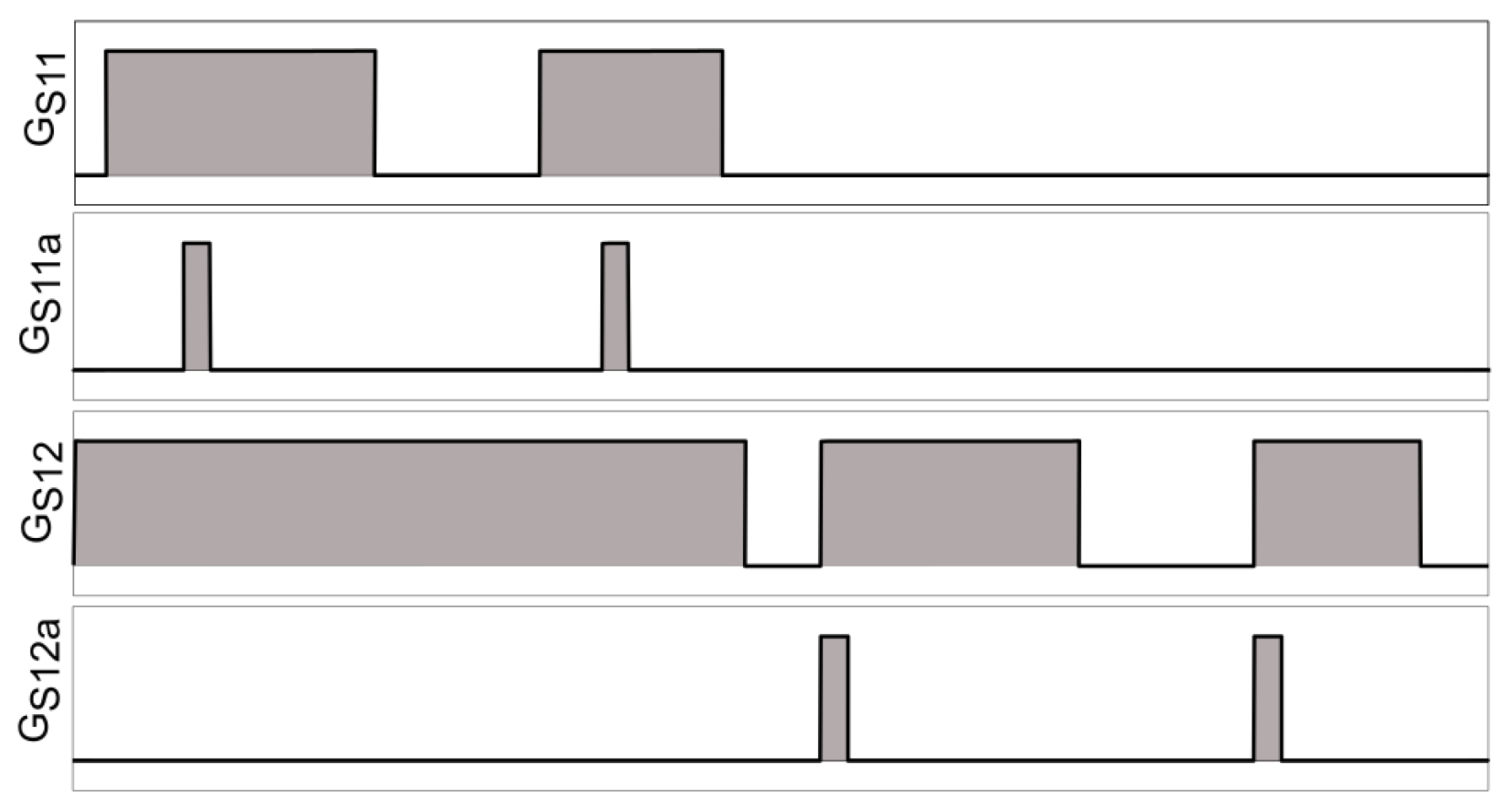
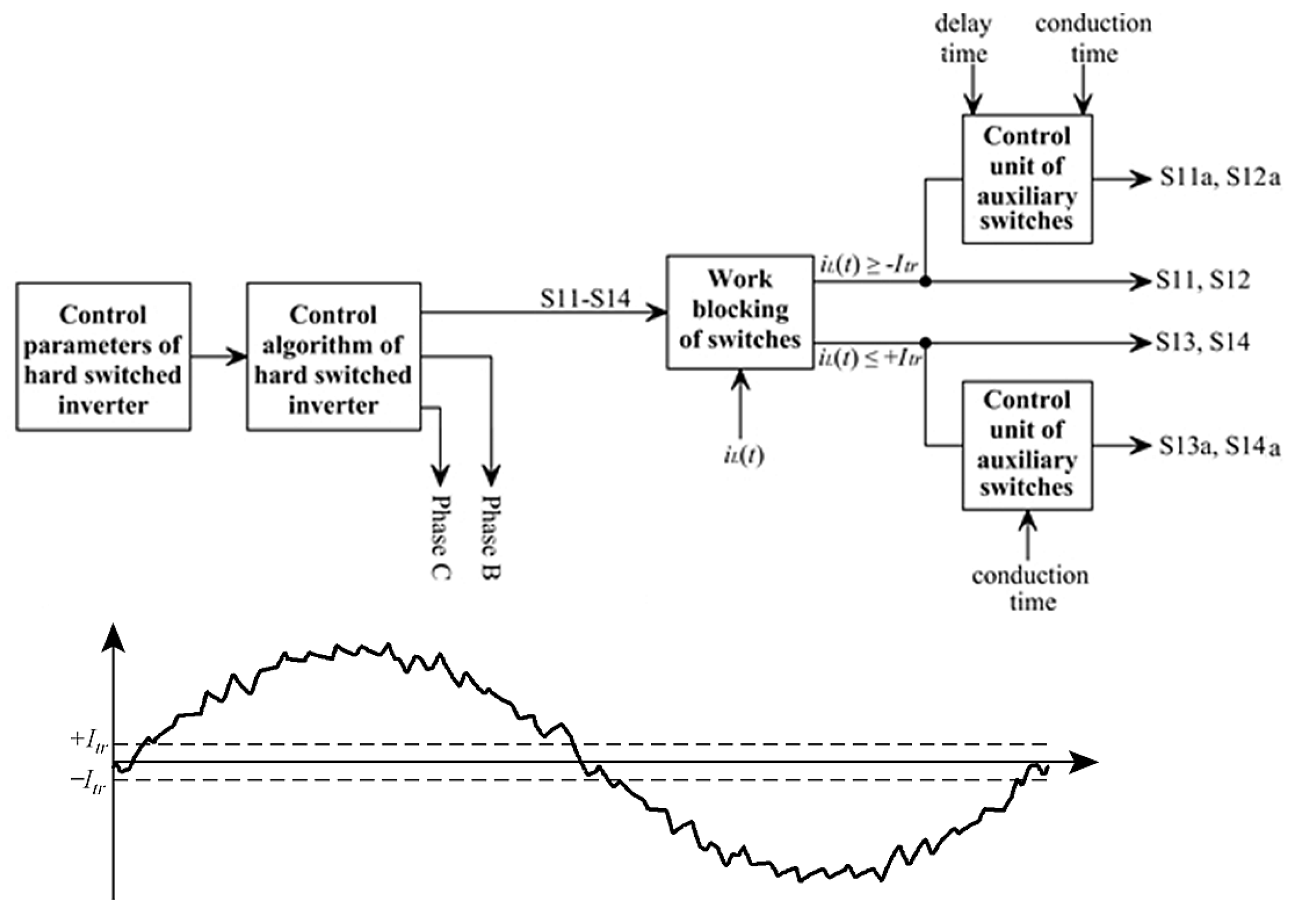
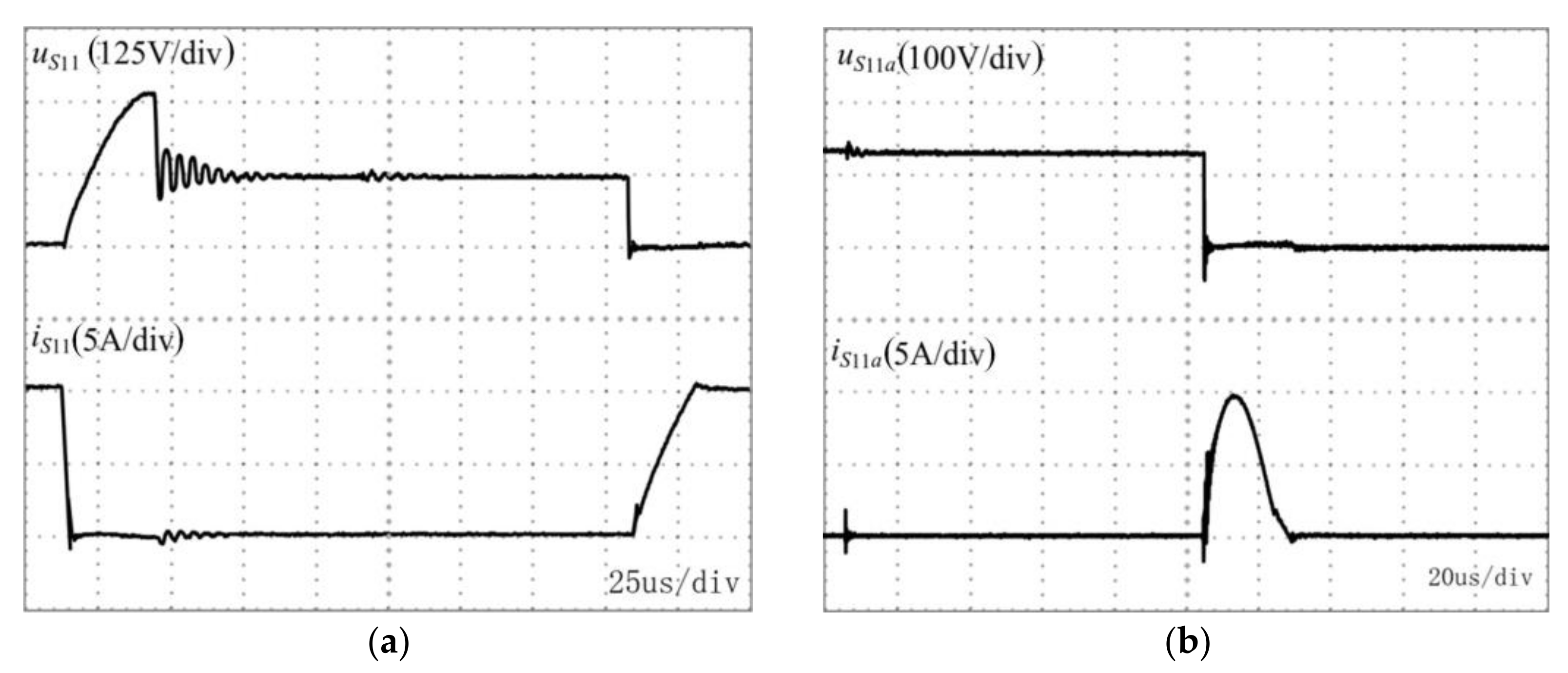


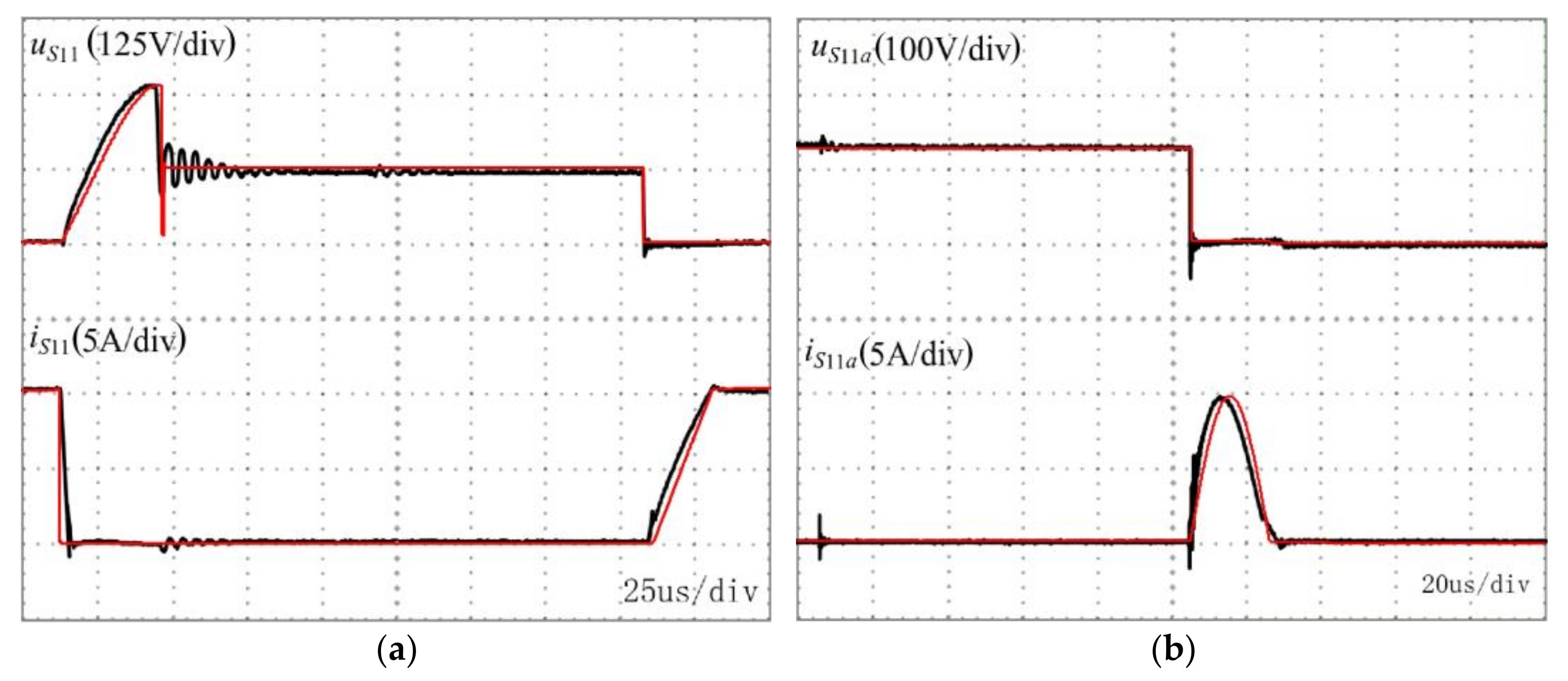

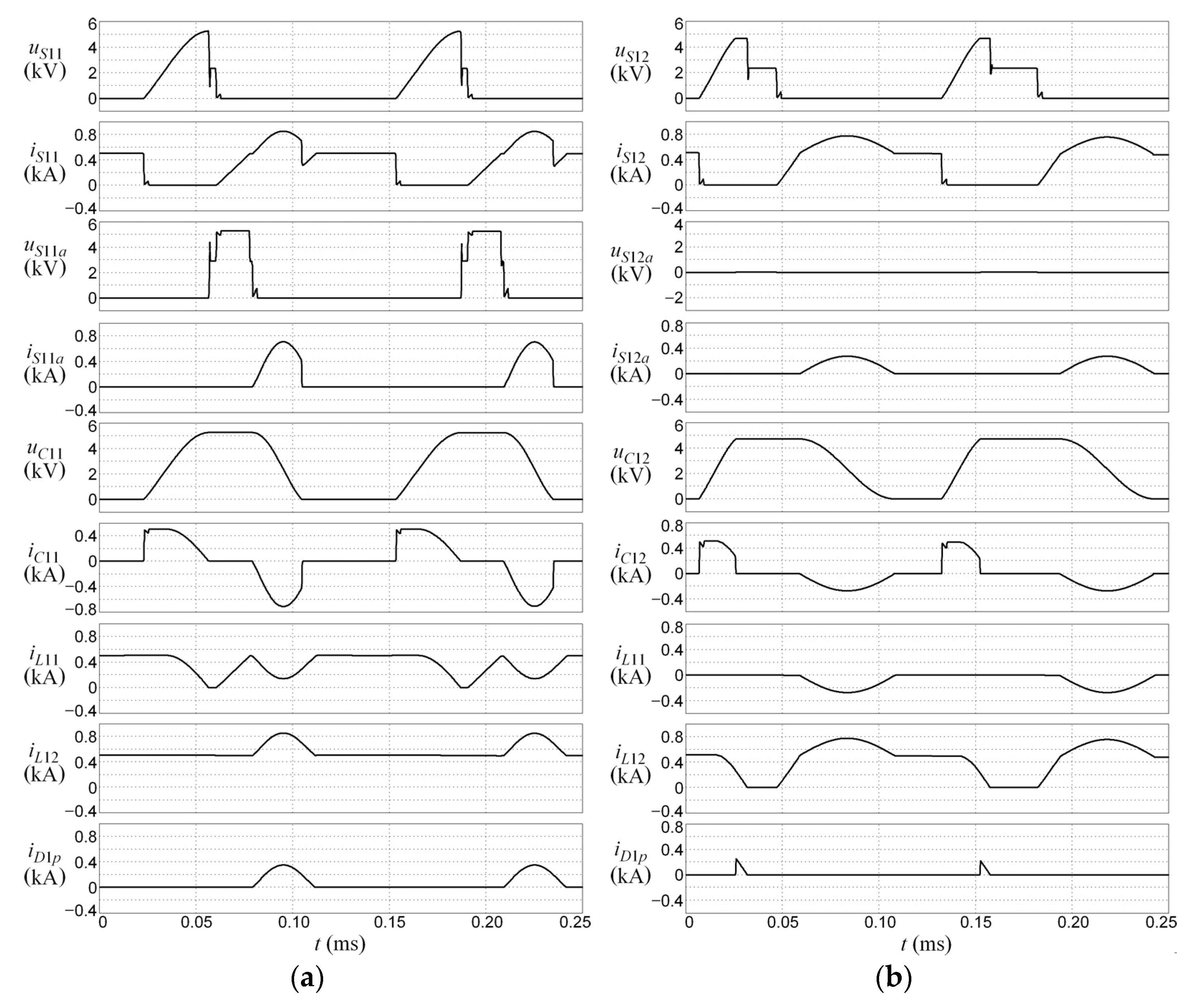
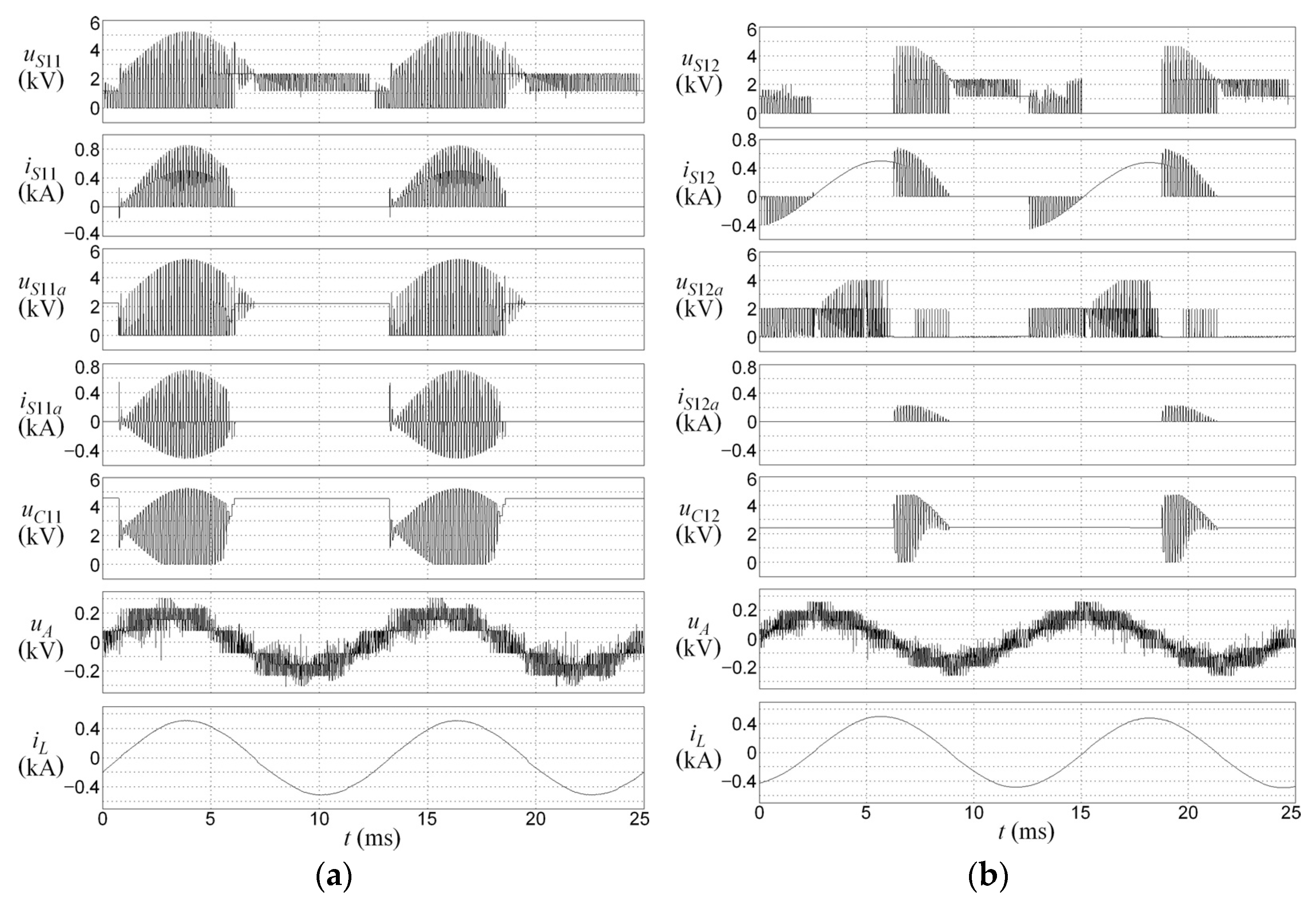
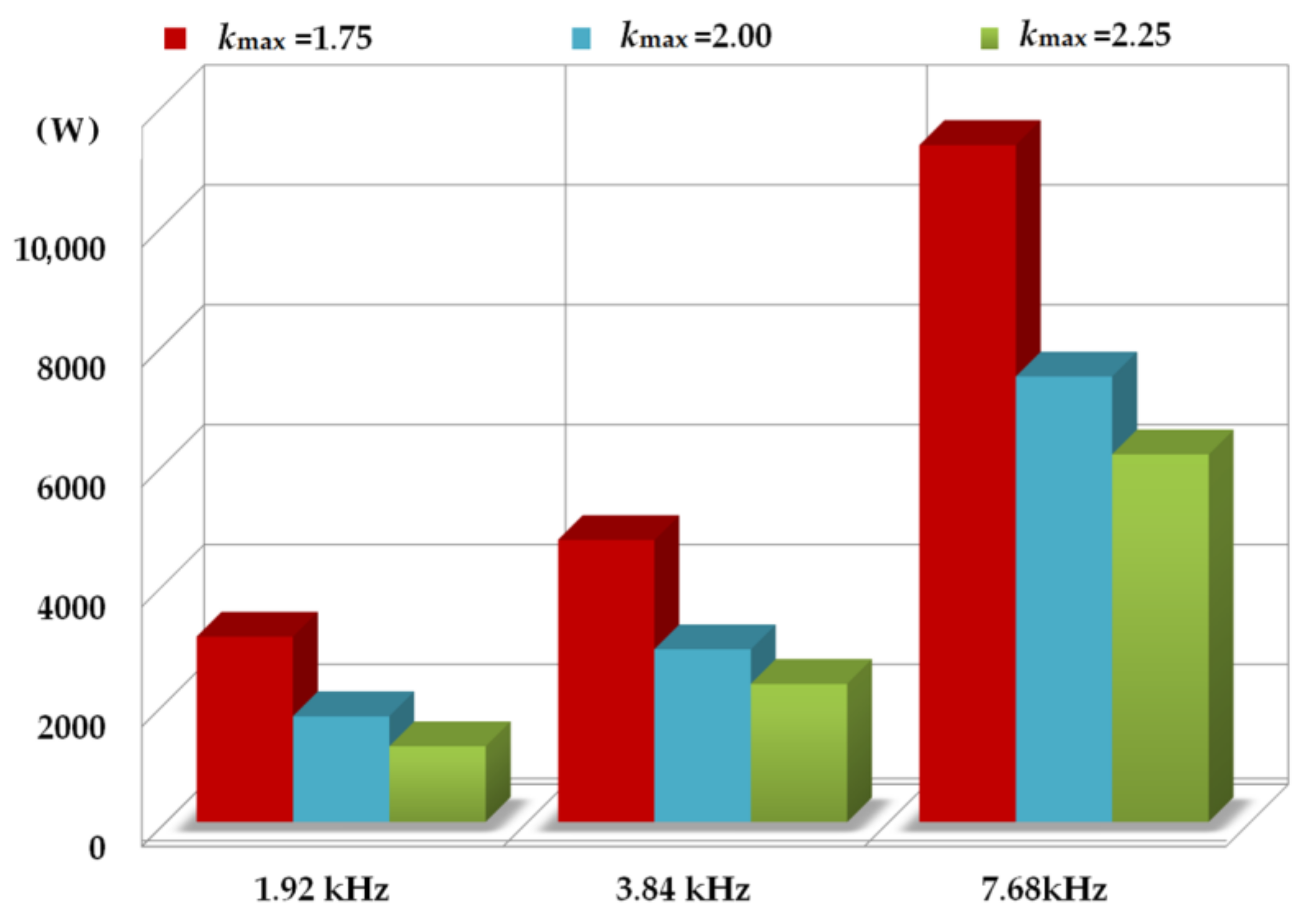
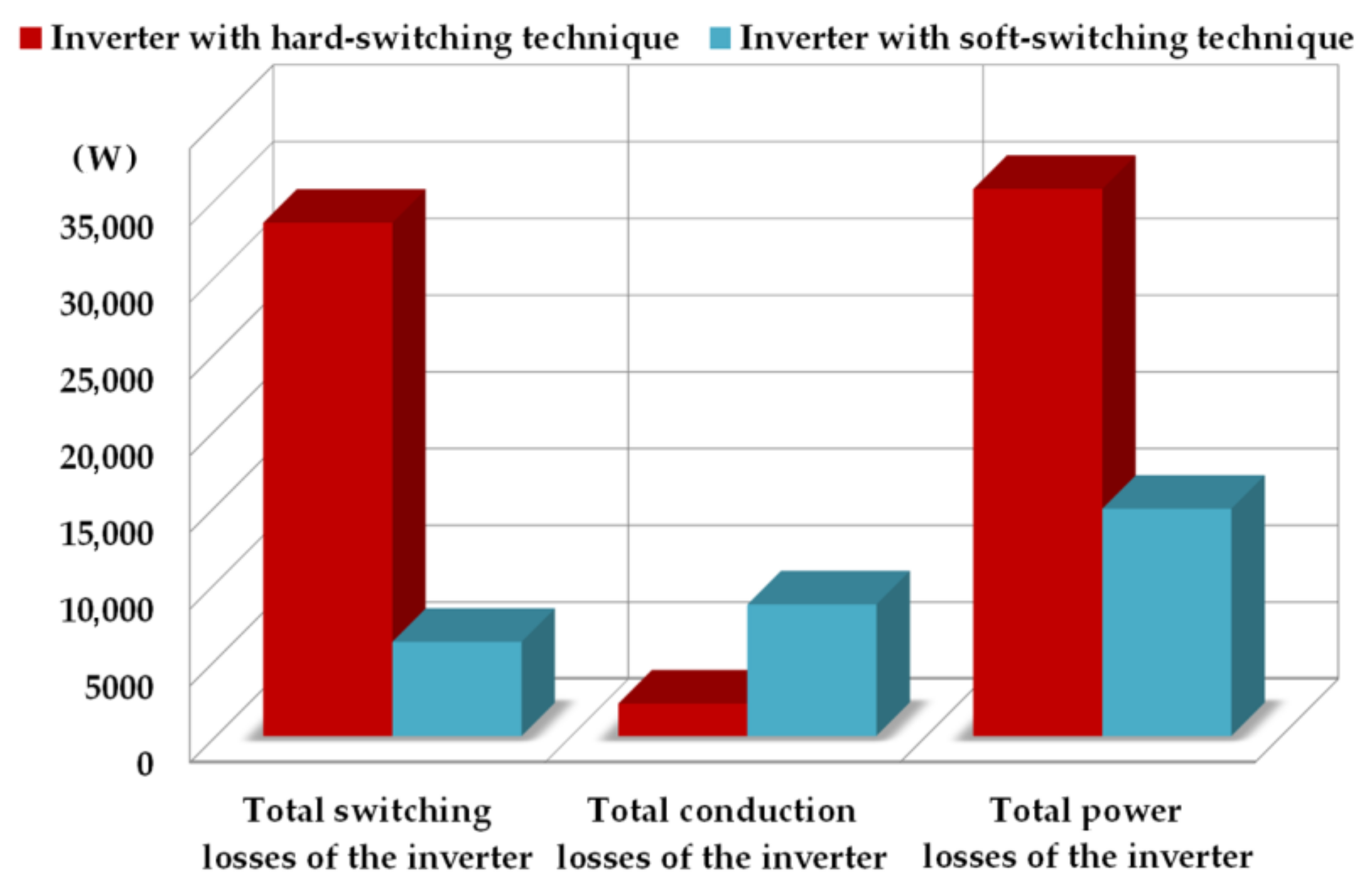
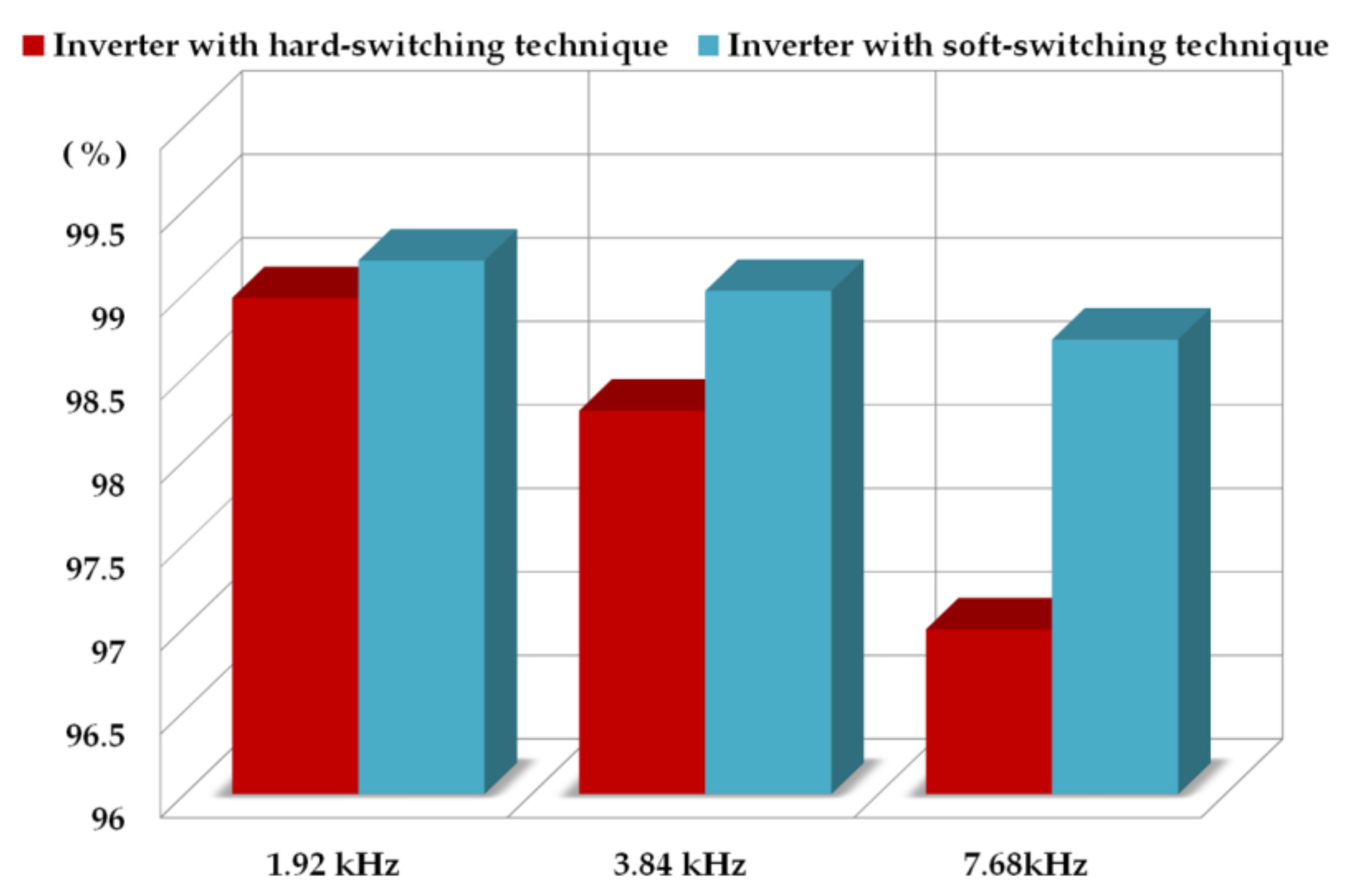
| VCC (V) | IC (A) | ton (ns) | tr (ns) | toff (ns) | tf (ns) | trr (ns) | Irrm (A) | VCE (V) |
|---|---|---|---|---|---|---|---|---|
| 1200 | 24.0 | 139 | 72.0 | 700 | 390 | 164 | 8.30 | 2.77 |
| Type | VCC (V) | IC (A) | ton (μs) | tr (μs) | toff (μs) | tf (μs) | trr (μs) | Irrm (A) | VCE (V) |
|---|---|---|---|---|---|---|---|---|---|
| FZ750R65KE3 | 6500 | 750 | 1.20 | 0.40 | 8.10 | 0.50 | 1.33 | 1200 | 3.7 |
| CM1500HC-90XA | 4500 | 1500 | 0.80 | 0.25 | 7.70 | 0.50 | 1.60 | 2100 | 2.8 |
| kmax | L11, L12 (μH) | R11, R12 (mΩ) | C11, C12 (μF) |
|---|---|---|---|
| 1.75 | 17.6 | 0.79 | 1.6 |
| 2.00 | 22.0 | 0.88 | 1.1 |
| 2.25 | 34.0 | 1.10 | 1.1 |
| kmax | 1.92 kHz | 3.84 kHz | 7.68 kHz | |||
|---|---|---|---|---|---|---|
| Soft -Switching | Hard -Switching | Soft -Switching | Hard -Switching | Soft -Switching | Hard -Switching | |
| Total Switching Losses (W) | ||||||
| 2.25 | 1357 | 9733 | 2399 | 17,700 | 6229 | 33,542 |
| 2.00 | 1859 | 2975 | 7531 | |||
| 1.75 | 3186 | 4802 | 11,392 | |||
| Conduction Losses of Transistors and Diodes (W) | ||||||
| 2.25 | 6781 | 2236 | 7824 | 2241 | 7785 | 2205 |
| 2.00 | 6367 | 7490 | 7943 | |||
| 1.75 | 6736 | 6257 | 7905 | |||
| Total Conduction Losses of Inductors (W) | ||||||
| 2.25 | 1212 | --- | 1242 | --- | 887 | --- |
| 2.00 | 1131 | 1170 | 816 | |||
| 1.75 | 1065 | 1098 | 695 | |||
| Total Power Losses of the Inverter (W) | ||||||
| 2.25 | 9349 | 11,969 | 11,465 | 19,940 | 14,901 | 35,747 |
| 2.00 | 9357 | 11,635 | 16,290 | |||
| 1.75 | 10,988 | 13,789 | 19,486 | |||
| Efficiency (%) | ||||||
| 2.25 | 99.19 | 98.97 | 99.01 | 98.30 | 98.72 | 96.99 |
| 2.00 | 99.19 | 99.00 | 98.60 | |||
| 1.75 | 99.05 | 98.82 | 98.33 | |||
Publisher’s Note: MDPI stays neutral with regard to jurisdictional claims in published maps and institutional affiliations. |
© 2021 by the authors. Licensee MDPI, Basel, Switzerland. This article is an open access article distributed under the terms and conditions of the Creative Commons Attribution (CC BY) license (https://creativecommons.org/licenses/by/4.0/).
Share and Cite
Szular, Z.; Rozegnal, B.; Mazgaj, W. A New Soft-Switching Solution in Three-Level Neutral-Point-Clamped Voltage Source Inverters. Energies 2021, 14, 2247. https://doi.org/10.3390/en14082247
Szular Z, Rozegnal B, Mazgaj W. A New Soft-Switching Solution in Three-Level Neutral-Point-Clamped Voltage Source Inverters. Energies. 2021; 14(8):2247. https://doi.org/10.3390/en14082247
Chicago/Turabian StyleSzular, Zbigniew, Bartosz Rozegnal, and Witold Mazgaj. 2021. "A New Soft-Switching Solution in Three-Level Neutral-Point-Clamped Voltage Source Inverters" Energies 14, no. 8: 2247. https://doi.org/10.3390/en14082247
APA StyleSzular, Z., Rozegnal, B., & Mazgaj, W. (2021). A New Soft-Switching Solution in Three-Level Neutral-Point-Clamped Voltage Source Inverters. Energies, 14(8), 2247. https://doi.org/10.3390/en14082247






